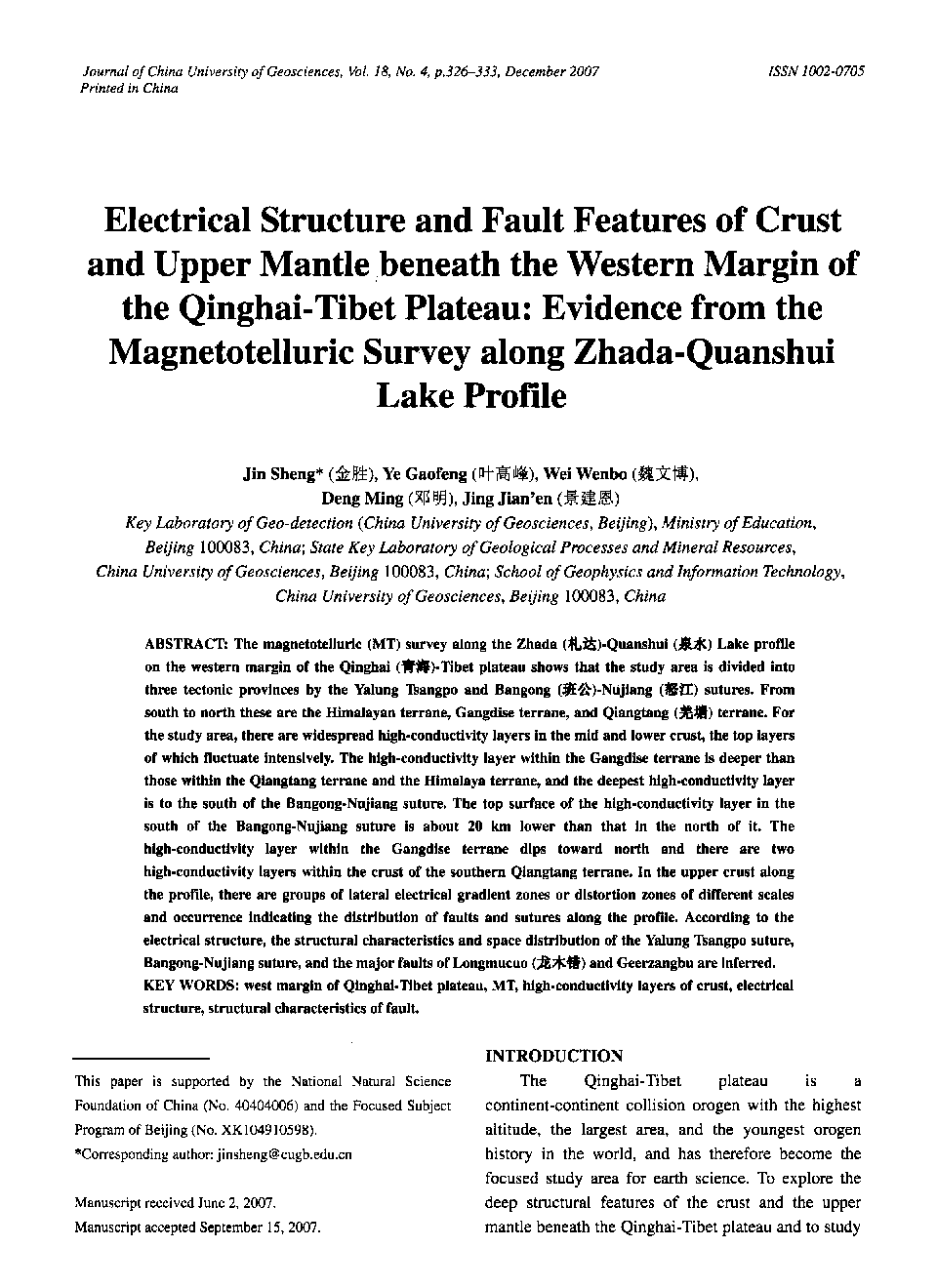| Article ID | Journal | Published Year | Pages | File Type |
|---|---|---|---|---|
| 4687806 | Journal of China University of Geosciences | 2007 | 8 Pages |
Abstract
The magnetotelluric (MT) survey along the Zhada-Quanshui Lake profile on the western margin of the Qinghai-Tibet plateau shows that the study area is divided into three tectonic provinces by the Yalung Tsangpo and Bangong-Nujiang sutures. From south to north these are the Himalayan terrane, Gangdise terrane, and Qiangtang terrane. For the study area, there are widespread high-conductivity layers in the mid and lower crust, the top layers of which fluctuate intensively. The high-conductivity layer within the Gangdise terrane is deeper than those within the Qiangtang terrane and the Himalaya terrane, and the deepest high-conductivity layer is to the south of the Bangong-Nujiang suture. The top surface of the high-conductivity layer in the south of the Bangong-Nujiang suture is about 20 km lower than that in the north of it. The high-conductivity layer within the Gangdise terrane dips toward north and there are two high-conductivity layers within the crust of the southern Qiangtang terrane. In the upper crust along the profile, there are groups of lateral electrical gradient zones or distortion zones of different scales and occurrence indicating the distribution of faults and sutures along the profile. According to the electrical structure, the structural characteristics and space distribution of the Yalung Tsangpo suture, Bangong-Nujiang suture, and the major faults of Longmucuo and Geerzangbu are inferred.
Keywords
Related Topics
Physical Sciences and Engineering
Earth and Planetary Sciences
Earth-Surface Processes
Authors
Jin Sheng, Ye Gaofeng, Wei Wenbo, Deng Ming, Jing Jian'en,
